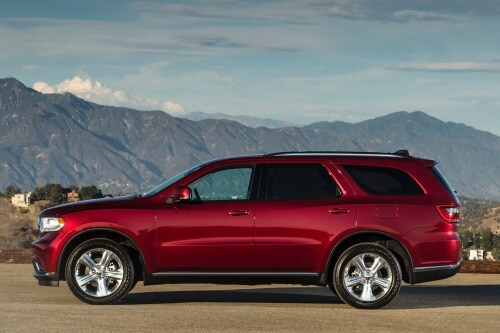In America, the open road calls to you, and there's no better way to experience the thrill of travel than the convertible. Peel back the roof, feel the wind in your hair and sun on your face. Ironically, the appeal of the modern convertible rests on its ability to deliver practical transportation as well as playful recreation. Convertible hardtops deliver the security of a folding metal top, although at the price of extra weight. Traditional fabric tops now afford multiplayer insulation from both weather and road noise. Forget the days of clumsy, manually operated tops and unwieldy covers. Thanks to the choice between folding hardtops and tight-fitting soft tops, life with a convertible can be just as comfortable as with a coupe.
 Our top pick here is the Mazda Miata, which embodies the pure spirit of the roadster: precise handling, superior steering and a rev-loving engine. Its virtues also include a low cost of entry. For example, in the top trim levels you can opt for a power-retractable hardtop and still not bust the budget. Maintenance costs are low, too. This car is snug for average-size drivers, and taller people may find they can't slide the seats back enough. The trunk is small. The sound system disappoints. But if you came for the driving, this is your car.
Our top pick here is the Mazda Miata, which embodies the pure spirit of the roadster: precise handling, superior steering and a rev-loving engine. Its virtues also include a low cost of entry. For example, in the top trim levels you can opt for a power-retractable hardtop and still not bust the budget. Maintenance costs are low, too. This car is snug for average-size drivers, and taller people may find they can't slide the seats back enough. The trunk is small. The sound system disappoints. But if you came for the driving, this is your car. The Ford Mustang V6 convertible is an iconic American pony car and a marvel at this price. Even better, the 2013 model has updated exterior styling and a new gauge cluster. An automatic transmission with manual shift control is new, but the authentic manual is a better choice. As always, what draws us is the Mustang's ability to be both a daily driver and a weekend romper. There are a few flaws here, including some interior trim executed in cheap plastic, no telescoping steering wheel and less trunk space than the coupe. But don't let these cavils stop you.
The Ford Mustang V6 convertible is an iconic American pony car and a marvel at this price. Even better, the 2013 model has updated exterior styling and a new gauge cluster. An automatic transmission with manual shift control is new, but the authentic manual is a better choice. As always, what draws us is the Mustang's ability to be both a daily driver and a weekend romper. There are a few flaws here, including some interior trim executed in cheap plastic, no telescoping steering wheel and less trunk space than the coupe. But don't let these cavils stop you.
There's no trading down with the BMW 1 Series convertible, the scrappy entry-level soft top in the carmaker's line. The inline-6 engine is the one you find in the BMW 3 Series. You get the responsiveness, handling and in-cabin refinement found in higher-math Bimmers. Of course, there's less trunk space here than in the coupe, and the backseats are from Lilliput. Options can bust a budget. But you can choose some things that will enhance the big-sky experience, such as optional leather upholstery that comes with a sun-reflective treatment. Thoughtful convertible-centric things like that make the car a winner.
A complete redesign takes the already popular Porsche Boxster up several notches, making it this segment's top pick. The new base engine is more powerful and achieves better fuel economy. The car looks sharper and handles better, with an interior that accommodates taller drivers and offers more occupant space overall. You'll see Porsche Panamera inspiration in the gauges, dash and center console. The power-operated soft top folds in 10 seconds. But there are some downsides. The Boxster's options are virtually endless, so costs can escalate. There are two trunks, but together they offer just about 10 cubic feet for cargo.
Audi likes to carve its own path, and that's evident in it the Audi A5 Cabriolet. The car is powered by a spirited turbocharged four-cylinder engine, not the six-cylinder you'd expect. There's no retractable hardtop on offer. But there are upsides here. The four-cylinder engine is more fuel-efficient, and powers a car that's taut and crisp on the road. The soft top is light, raises or lowers in 15 seconds and leaves good trunk space when stowed. The A5 has a handsome, feature-rich interior. Although the rear seats are best for shorter passengers, they do fold down, which comes in handy.
The BMW 3 Series hardtop convertible is our third pick. BMW has redesigned the 3 Series sedan and wagon, but not the convertible (yet). It retains the previous-generation body style and naturally aspirated inline-6 engine. The car has excellent ride and handling balance, an upscale cabin and convertible-specific safety, convenience and comfort features. Even with the elegant top stowed, the trunk will hold a standard roller suitcase. Just as with the BMW 1 Series, option packages and à la carte choices are close to overwhelming and can kick up the price. But you'll get plenty of car for the money.
















